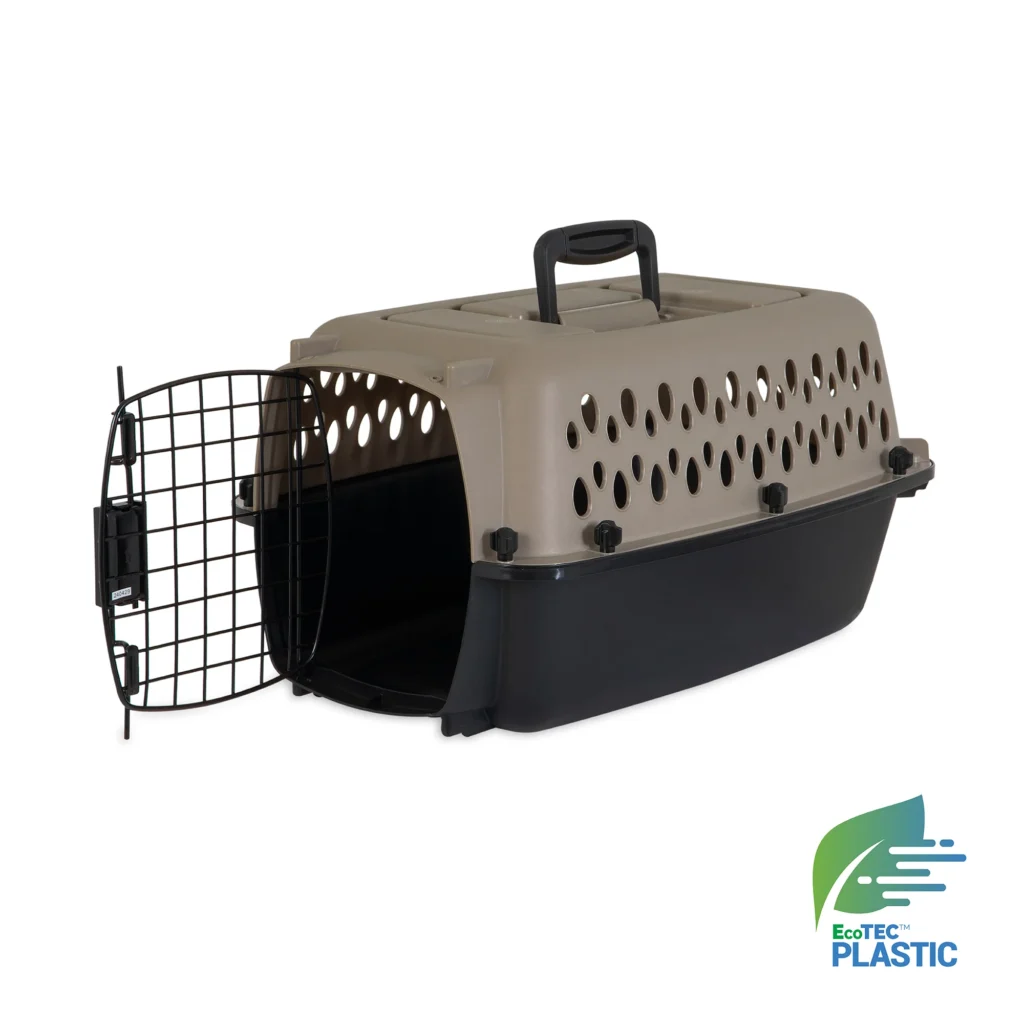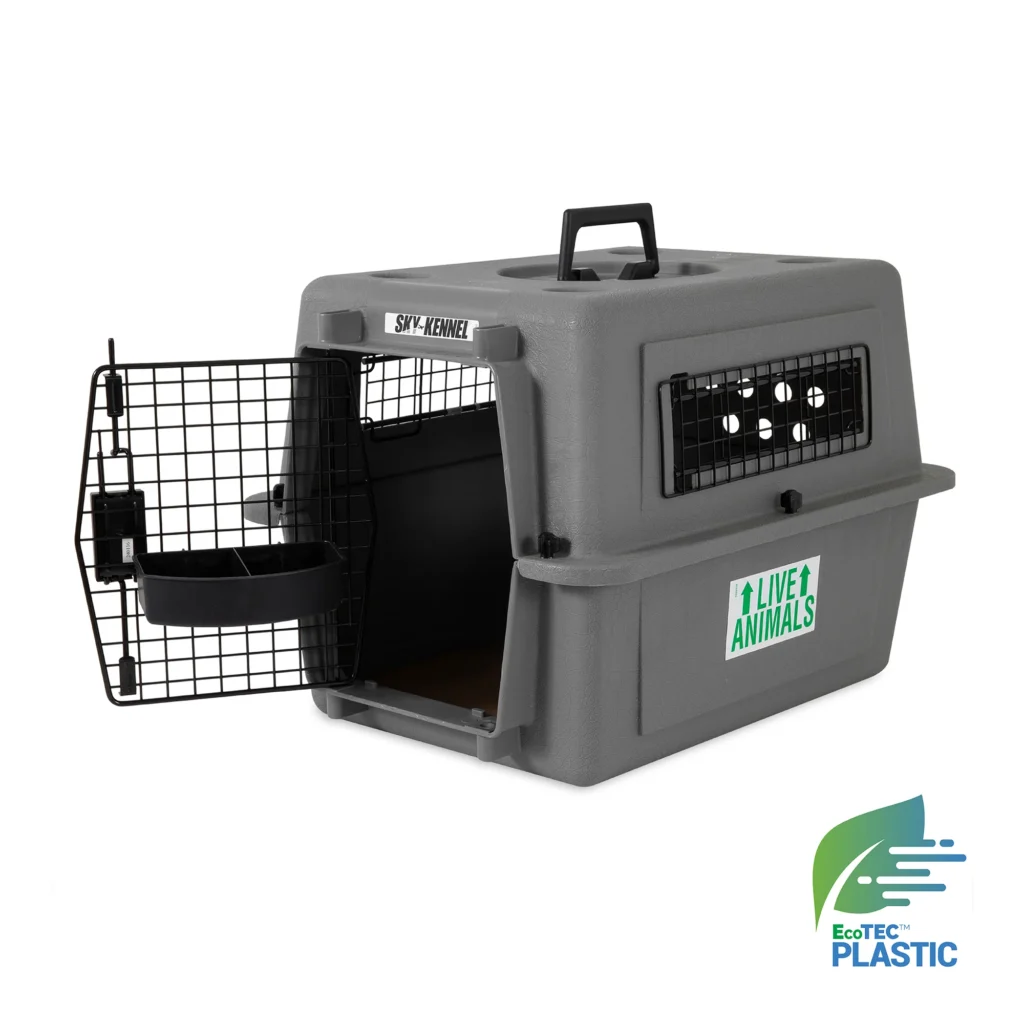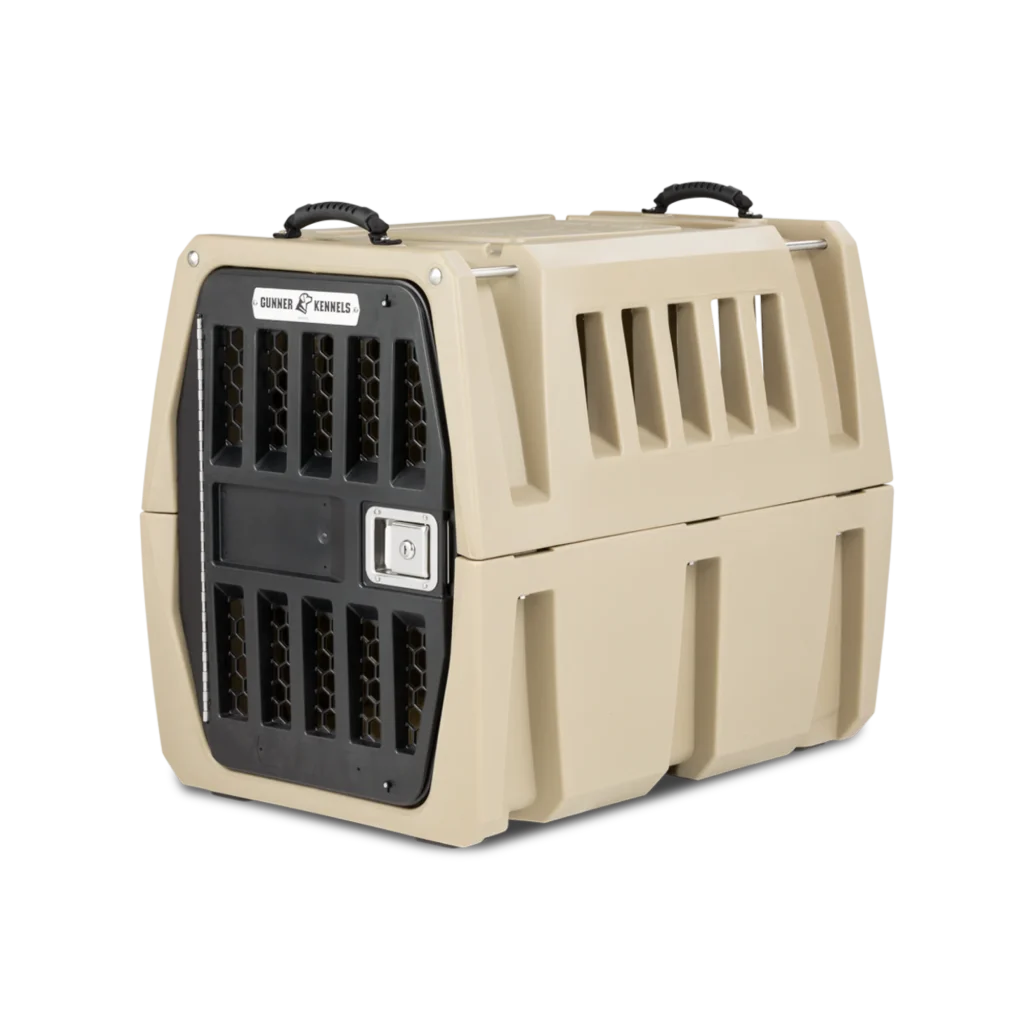Shipping your cat? Our 2025 guide to the best IATA-compliant cat carriers for cargo travel reviews the top 3 safest crates to ensure your pet meets all airline regulations for a secure journey.
For a pet owner, there are few prospects more daunting than placing your beloved cat into the care of an airline’s cargo service. The thought of them alone in the hold of an airplane can be incredibly stressful. Unlike a casual in-cabin trip, cargo travel is a complex logistical operation governed by strict international safety regulations. In this situation, your cat’s carrier is not just a travel accessory; it is their safety capsule, their life-support system, and the single most important factor in ensuring a safe and successful journey.
Choosing the right cat carriers for cargo is not about style or convenience—it is entirely about safety and compliance. One mistake, one non-compliant feature, can result in your cat being denied travel at the last minute.
This guide is here to provide clarity and peace of mind. We will guide you through the non-negotiable international airline standards, explain the reasons behind these rules, and recommend the most trusted, durable, and secure crates available on the market. This is your definitive guide to ensuring your feline family member is protected, safe, and ready for their journey.

The Unbreakable Rules: Decoding IATA-Compliance for Your Cat Carriers Cargo Crate
The International Air Transport Association (IATA) sets the global standard for transporting live animals in their Live Animals Regulations (LAR). These are not suggestions; they are rules that every major airline follows to the letter. Understanding them is the first step.
1. Rigid Construction is Mandatory
- The Rule: The carrier must be made of rigid, durable material like hard plastic, metal, or wood. Soft-sided, collapsible, or wire-mesh carriers are strictly forbidden for cargo travel.
- Why it Matters: The cargo hold contains luggage, freight, and other items that can shift during flight. A rigid crate protects your cat from being crushed by external forces, ensuring their physical space is never compromised.
2. The “Nuts and Bolts” Requirement
- The Rule: If the crate is a two-piece model, the top and bottom halves must be secured with metal nuts and bolts. Crates held together by plastic clips, side latches, or snap closures are not compliant.
- Why it Matters: Changes in air pressure and rough handling can cause plastic clips to fail, potentially allowing the crate to break apart. Metal nuts and bolts ensure the crate remains a single, solid unit throughout the entire journey. Many airlines require all bolt holes to be filled.
3. Four-Sided Ventilation
- The Rule: The crate must have ventilation openings on all four sides. The total ventilated area must be at least 16% of the total surface area of the four sides.
- Why it Matters: Unlike the climate-controlled cabin, the cargo hold’s airflow can be different. Four-sided ventilation is critical to ensure your cat receives constant, adequate fresh air from all directions, preventing overheating and respiratory distress.
4. A Secure, Single-Action Door
- The Rule: The door must be made of metal (not plastic) and must close securely with a spring-loaded locking mechanism that requires a single action to open.
- Why it Matters: This design prevents the door from being accidentally opened by vibrations or if another object bumps against it. It ensures that only a deliberate action by a human can open the crate.
5. Correct Sizing for Animal Welfare
- The Rule: The crate must be large enough for your cat to stand up without touching the top, sit down, lie down in a natural position, and turn around comfortably.
- How to Measure: Measure your cat’s height from the floor to the top of their head/ears (whichever is higher) and their length from their nose to the base of their tail. The crate’s interior should be several centimetres taller and longer than your pet. When in doubt, size up.
6. Attached Food and Water Bowls
- The Rule: The crate must be equipped with separate food and water bowls that are attached to the inside of the door. They must be accessible from the outside of the crate without opening the door.
- Why it Matters: This allows airline staff to provide water or food to your cat during long layovers without the risk of your pet escaping. Often, water is frozen in the bowl before the flight so it can melt slowly.
7. “Live Animal” Stickers and Proper Labeling
- The Rule: The crate must be marked with standard “Live Animal” stickers/labels, usually with directional “This Way Up” arrows. You must also affix your name, address, phone number, and your cat’s name to the crate.
Understanding these non-negotiable rules is the key to selecting the right cat carriers for cargo travel.
The 2025 Review: Our Top 3 Picks for the Best Cat Carrier Cargo Crate
In the world of cargo-safe crates, a few names stand out for their unwavering commitment to meeting and exceeding IATA standards.
1. The Industry Gold Standard: The Petmate® Sky Kennel®
If you were to ask a professional pet shipper what crate they use most often, the answer would almost certainly be the Petmate Sky Kennel. This crate is the gold standard and the one against which all others are measured.
- Why It’s the Top Pick: It is specifically designed to meet the rigorous requirements of IATA and nearly every major airline. It includes all the essential features out of the box: heavy-duty plastic construction, metal nuts and bolts, a 4-way vault door with a secure latch, four-sided ventilation, and clip-on food and water bowls. It even comes with “Live Animal” stickers. Its reputation is built on decades of reliable use.
- Key Specs:
- Material: Heavy-duty, high-impact plastic & wire door.
- Features: IATA compliant, metal hardware, secure latch, clip-on bowls, and included labels.
- Sizes: Comes in a wide range of sizes, from a small cat up to a giant dog.
- Best For: Any pet owner who wants the most recognized, trusted, and widely accepted crate for international or domestic cargo travel. This is the ultimate “peace of mind” choice.
Resource: Explore the specs and sizes on the Petmate official website.

2. The Heavy-Duty Contender: The Gunner® G1 Kennel
For the owner who wants to invest in the absolute highest level of safety and security, the Gunner Kennel is in a class of its own. It is less of a crate and more of a personal fortress for your pet.
- Why It’s a Top Pick: The Gunner G1 is famous for being 5-star crash-tested and is built with a double-walled, rotomolded construction (the same process used for high-end coolers and kayaks), making it virtually indestructible. It features a paddle-latch door that is exceptionally secure and has been used by pet owners for even the most extreme travel situations. While more expensive, its durability is unparalleled.
- Key Specs:
- Material: Double-walled rotomolded polyethylene.
- Features: 5-star crash-tested, escape-proof door, heavy-duty construction, made in the USA.
- Sizes: Sizes start at “Small,” which is suitable for most cats.
- Best For: Pet owners with extremely valuable or anxious pets, those undertaking complex international relocations, or anyone who wants to invest in the safest, most durable crate on the planet.
Resource: Learn about the extensive safety testing at the Gunner website.

3. The Accessible & Reliable Choice: The Petmate® Vari Kennel®
A close cousin to the Sky Kennel, the Petmate Vari Kennel is another highly reliable and widely accepted option that has been a staple of pet travel for years.
- Why It’s a Top Pick: Like the Sky Kennel, the Vari Kennel is built to be IATA compliant, featuring durable plastic, metal hardware for assembly, and excellent ventilation. The primary difference is often a slightly different door latch mechanism (a dial latch) and overall aesthetic. It provides the same core safety features as the Sky Kennel and is a trusted choice for a safe cat carriers for cargo.
- Key Specs:
- Material: High-impact plastic & wire door.
- Features: IATA compliant, secure dial latch, easy assembly.
- Sizes: Available in a full range of sizes suitable for cats and dogs.
- Best For: Travelers looking for a proven, IATA-compliant crate that is widely available and has a long track record of safety and reliability.
Resource: The Vari Kennel is also available on the Petmate website and through major pet supply retailers.
Preparing Your Cat (and the Crate) for Cargo Travel
Buying the right cat carrier for cargo is only half the battle. Preparation is key.
- Acclimate, Acclimate, Acclimate: This process should start months before your trip, not days. Leave the open crate in your living room. Feed your cat their meals inside it. Place their favourite toys and blankets in it. You must transform the crate from a scary box into their personal, safe den.
- Line the Crate Properly: Place an absorbent puppy training pad on the bottom of the crate. On top of that, add a thin blanket or t-shirt that smells like you to provide comfort. Do not use deep bedding or large toys that could pose a suffocation risk.
- Hydration is Key: A few hours before the flight, freeze water in the clip-on bowl. This prevents it from spilling during loading and melts slowly throughout the journey, providing a constant source of water.
- The Vet Visit: Your cat will need a “Fitness to Fly” health certificate issued by a veterinarian within 10 days of travel. This is a mandatory document.
- Booking the Flight: You cannot simply show up with a crate. You must book your cat’s spot through the airline’s dedicated cargo department. This is a separate process from booking your passenger ticket.
Important Relocation & Airline Resources:
- IATA Traveler’s Pet Corner: The official source for live animal regulations.
- Qantas Freight (Pet Travel): Information for shipping pets from Australia.
- International Pet and Animal Transportation Association (IPATA): A network of professional pet shippers who can manage the entire relocation process for you.
Conclusion
Handing over your cat to an airline is an act of trust. By choosing genuinely IATA-compliant cat carriers for cargo, you are taking the single most important step to ensure that trust is well-placed. A secure, well-ventilated, and correctly sized crate is the foundation of a safe journey. While the process is complex, remember that these regulations were created by experts with your pet’s safety as their number one priority. With the right preparation and the right equipment, you can feel confident that your beloved feline family member is protected on their journey to their new home.
